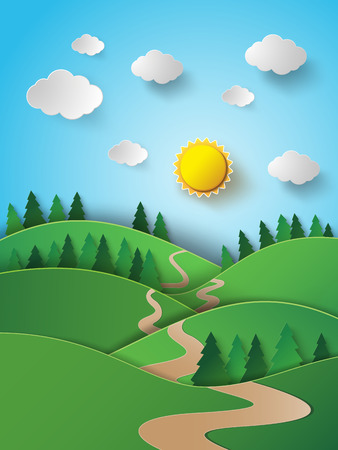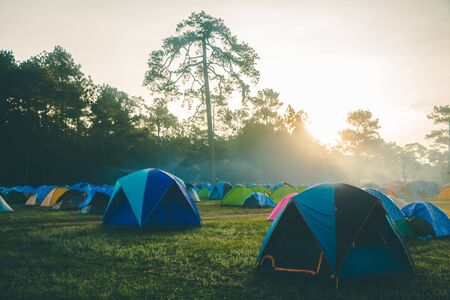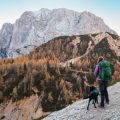Weather: Planning for the Unpredictable
When choosing your first campsite, weather is often the wild card that can make or break your outdoor experience. In the U.S., weather patterns can shift rapidly depending on the region and season, so it’s essential to anticipate and prepare for a range of conditions. Start by checking the local forecast, but remember that weather apps aren’t always spot-on in remote areas. If you’re camping in the mountains, expect temperature swings—warm afternoons can quickly turn into chilly nights. Always pack extra layers, even in summer. Watch out for precipitation: rain can transform a cozy site into a muddy mess or even cause flash floods in low-lying areas. When possible, select higher ground for your tent and avoid valleys or dry creek beds. Wind is another factor; open fields might look inviting but offer little protection from gusts that could flatten your tent or send gear flying. Seek natural windbreaks like clusters of trees or rock formations, but be mindful of dead branches overhead. By thinking ahead and adapting to changing conditions, you’ll set yourself up for a safer and more enjoyable camping trip.
Terrain: Choosing the Right Ground
When picking your first campsite, the terrain can make or break your outdoor experience. The land itself determines how safe, comfortable, and enjoyable your night will be. Here are some practical factors to keep in mind:
Elevation Matters
It’s tempting to camp at the lowest, flattest spot, but that’s often a mistake. Low areas can collect water during rain, leaving you soaked or muddy. Higher ground usually drains better and offers more security from surprise floods. However, avoid exposed hilltops where wind can be harsh.
Drainage Is Key
Nobody wants to wake up in a puddle. Check for natural depressions or signs of past water flow—flattened grass or debris lines can be hints. Choose spots where the ground is firm but not rocky, slightly sloped for runoff, and away from obvious channels.
Watch Out for Hazards
The right terrain keeps you out of trouble. Steer clear of dead trees (“widowmakers”), loose rocks, or steep drop-offs nearby. Think about what might happen if it rains hard or if winds pick up overnight.
Quick Terrain Checklist
| Factor | What to Look For | What to Avoid |
|---|---|---|
| Elevation | Slightly higher ground with a gentle slope | Low-lying areas, hilltops exposed to wind |
| Drainage | Firm, well-drained soil; no standing water | Depressions; obvious runoff channels |
| Hazards | Stable ground away from hazards | Dead trees, loose rocks, steep edges |
Pro Tip:
If you’re in doubt, crouch down and look at the land like water would—where would it go in a storm? This simple trick can save you from a soggy night and help you feel more confident about your setup.

3. Wildlife: Staying Safe and Respectful
When picking your first campsite, it’s crucial to understand how local wildlife can impact your outdoor experience. Every region in the U.S.—from the forests of the Pacific Northwest to the deserts of the Southwest—hosts different animals with their own habits and risks. Do some research on what kinds of wildlife are common where you’ll be camping, such as bears, raccoons, snakes, or even insects like ticks and mosquitoes. Knowing what animals might visit your site shapes how you prepare and behave.
Food Storage Rules Matter
One of the most important ways to avoid unwanted encounters is proper food storage. Many established campgrounds provide bear-proof lockers or detailed instructions for hanging food from trees, especially in bear country like the Rockies or Appalachians. Even if you’re not in bear territory, raccoons and smaller critters can be persistent and clever. Always keep food sealed tightly in containers or coolers, and never store snacks in your tent. Following these food storage rules keeps both you and local wildlife safe.
Campsite Etiquette for Wildlife Safety
Good campsite etiquette helps minimize negative impacts on wildlife. Don’t leave trash behind—pack out all garbage and leftover food scraps. Set up your cooking area away from your sleeping spot to reduce smells that could attract animals overnight. Avoid feeding wildlife, no matter how friendly they seem; it’s unhealthy for them and dangerous for future campers. Making noise while hiking or moving around camp can also alert animals to your presence, reducing surprise encounters.
By understanding local wildlife, following proper food storage practices, and respecting campsite etiquette, you’ll lower your risk of dangerous or unwanted animal interactions. This not only protects you but also preserves the natural balance of the area for everyone who camps after you.
4. Local Regulations and Accessibility
When choosing your first campsite, its easy to focus on the scenery and forget about the rules and logistics that come with camping in the U.S. However, understanding local regulations and accessibility is crucial—especially since weather, terrain, and wildlife can directly influence which rules apply and how easy it is to reach certain areas.
Navigating Permits and Restrictions
Many popular camping spots, especially in national parks or protected wilderness areas, require permits. These permits help manage visitor numbers and protect sensitive ecosystems from overuse—something thats even more important in regions where wildlife is abundant or the terrain is fragile. Some areas might restrict open fires during dry seasons due to wildfire risk, while others may limit access entirely during certain months to protect animal breeding grounds or prevent trail erosion after heavy rains.
How Seasonal Access Impacts Your Options
Seasonality plays a huge role in campsite accessibility. Snowfall can close mountain passes; spring thaws can make forest roads impassable; and wildlife migration patterns may mean some sites are off-limits part of the year. Always check with local ranger stations or park websites before you head out so you aren’t caught off guard. Here’s a quick reference table to illustrate how regulations and access can change throughout the year:
| Season | Common Regulations | Accessibility Challenges |
|---|---|---|
| Spring | Trail closures for mud/erosion, limited permits due to flooding | Muddy roads/trails, rivers may be swollen |
| Summer | Fire bans, increased permit requirements for popular spots | Crowded sites, high fire risk areas closed |
| Fall | Wildlife protection zones (e.g., elk rutting), reduced staff at ranger stations | Variable weather, early snow possible in mountains |
| Winter | No camping in some areas due to snow/wildlife hibernation zones | Road closures, avalanche risks, limited emergency services |
Your First Steps: Plan Ahead & Ask Questions
If youre new to camping, dont hesitate to call ahead or stop by a ranger station for advice. Staff can tell you about current restrictions, seasonal hazards, and which campsites are best suited for beginners given current weather, terrain conditions, and local wildlife activity. Being proactive will not only keep you legal but also safer—and your first trip much more enjoyable.
5. Camp Comfort: Sun, Shade, and Shelter
When picking your first campsite, comfort is more than just a cozy sleeping bag—its about how you balance sun, shade, and shelter in the great outdoors. Let’s break down some practical strategies for creating a relaxing camp experience while staying safe and making the most of your surroundings.
Finding the Right Balance: Sun Exposure
Sunlight can be both a blessing and a challenge. Too much sun can lead to overheating, dehydration, or even sunburn, while too little can leave you chilly or damp. In most parts of the U.S., especially during summer, try to set up your tent where it will receive morning sun—this helps dry dew quickly—but is shaded by trees or land features during the hottest afternoon hours. If possible, orient your tent door away from direct afternoon sunlight for added comfort.
Natural Shelter: Trees and Terrain
Trees offer natural shade and act as windbreaks, but be sure to check above for dead branches (sometimes called “widowmakers”) before setting up camp. Hillsides or large boulders can also provide shelter from prevailing winds or sudden storms. However, avoid setting up camp in low-lying areas where rainwater could pool or near rivers prone to flash floods.
Enjoying the View—Without Sacrificing Comfort
We all love waking up to a scenic view, but remember to prioritize safety and practicality. Look for spots that offer both a beautiful vista and protection from the elements—like a clearing with partial tree cover or a ridge with sturdy shrubbery at your back. If you’re camping in wildlife-heavy areas, make sure your view doesn’t come at the cost of being too exposed; blend into the landscape when you can.
The key takeaway: Camp comfort comes from smart trade-offs between sun, shade, shelter, and scenery. Use what nature gives you thoughtfully—and always keep an eye on weather patterns and animal activity nearby. Your first campsite should feel like a welcoming retreat where you can recharge for another day of adventure.
6. Emergency Considerations
When you’re choosing your first campsite, it’s easy to get caught up in the beauty of nature or the promise of a peaceful retreat. But safety always comes first, especially when facing unpredictable weather, challenging terrain, or potential wildlife encounters. Evaluating emergency considerations is an essential part of responsible camping.
Evaluating Escape Routes
Always take a moment to study your campsite’s layout and surrounding terrain for possible escape routes. If sudden storms hit or wildfires break out, knowing the quickest way back to your vehicle or a main road can make all the difference. Avoid camping in areas where flash flooding could cut off exits, and steer clear of steep slopes that could become hazardous during rain.
Signal Availability
Cell service can be spotty or nonexistent in many outdoor locations. Before you settle down, check for reception—sometimes even moving just a few feet makes a difference. Let someone back home know your plans and expected return time. If you’ll be in a dead zone, consider investing in a satellite messenger or personal locator beacon for added peace of mind.
Proximity to Help
Your campsite doesn’t need to be right next to civilization, but think about how far you’d have to go for assistance if something goes wrong. Are there park rangers nearby? How long would it take emergency services to reach you? Balancing solitude with access to help is especially important for first-time campers who might encounter unexpected challenges.
Preparation Is Key
No one expects emergencies, but being prepared will help you react quickly and calmly if something does happen. Weather changes, shifting terrain, and wildlife can each present unique risks—so build your emergency plan into your site choice from the start.
Toolbox Tip
Keep an updated map (paper or digital), a charged power bank, and a basic first-aid kit close at hand. Mark emergency exit points on your map as soon as you arrive at camp.


